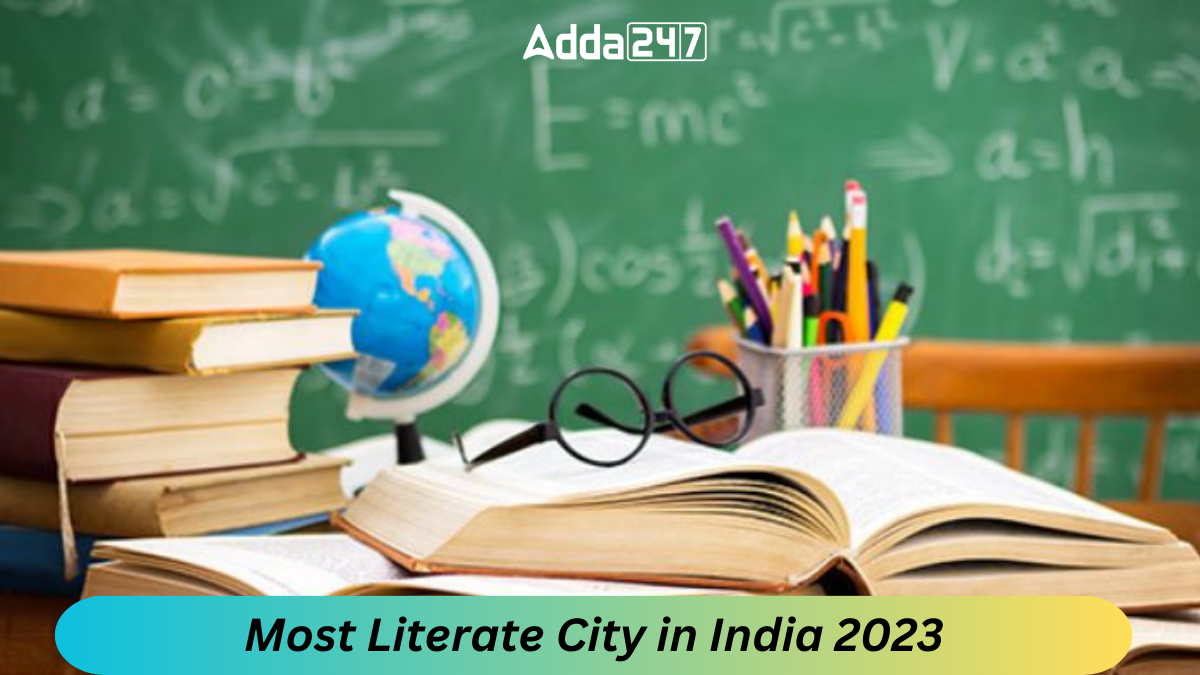India, country with a rich tapestry of cultures and traditions, is making significant strides in education and literacy. In this article, we will explore and celebrate the cities that stand out for their commitment to education and literacy. The literacy rate is a crucial indicator of a city’s development, reflecting its investment in human capital and intellectual growth. Let’s delve into the most literate cities in India 2023.
Most Educated City in India 2023
In 2023, Bengaluru, Karnataka, stands as a beacon of progress, largely attributes to its robust education sector, ranks as the most educated city in India 2023. Renowned for its esteemed educational institutes, the city has played a pivotal role in shaping India’s post-independence trajectory. Among the notable establishments are the Indian Institute of Science, a venerable institute in science education since 1909, along with prestigious centers such as the National Centre for Biological Sciences, National Institute of Mental Health and Neuro Sciences, Jawaharlal Nehru Centre for Advanced Scientific Research and Indian Institute of Astrophysics. Bengaluru emerges as a frontrunner in India’s literacy landscape.
Top-10 Most Literate Cities in India 2023
As of December 2023, Bengaluru, Karnataka, holds the title of the most literate city in India for its numerous reputable educational institutes, followed by Pune, Hyderabad, Mumbai and Delhi.
Here is the list of top-10 most literate cities in India 2023:
| Most Literate Cities in India 2023 | |||
| S. No. | City | State | Special Feature |
| 1. | Bengaluru | Karnataka | It has numerous reputable educational institutes. |
| 2. | Pune | Maharashtra | Pune is also known as the eastern Oxford and continues to be a top choice for students. |
| 3. | Hyderabad | Telangana | Hyderabad is known for its International Institute of Information Technology and NALSAR University of Law. |
| 4. | Mumbai | Maharashtra | Mumbai is a home of great private and public colleges. |
| 5. | Delhi | Delhi | It is home to numerous famous central universities, including the University of Delhi. |
| 6. | Chennai | Tamil Nadu | It is referred to as India’s top engineering hub. |
| 7. | Kolkata | West Bengal | It includes several top-notch private universities make it the most educated city. |
| 8. | Ahmedabad | Gujarat | It is home to top-notch institutions, including the Indian Institute of Management and Viswakarma Engineering College. |
| 9. | Jaipur | Rajasthan | It is known for the universities like Banasthali Vidyapeeth, Institute of Hotel Management etc. |
| 10. | Surat | Gujarat | It is known due to the abundance of private and public institutions like the International Institute of Fashion Design. |
Important Facts Related to the Literacy Rate in India 2023
As of 2023, key literacy statistics in India highlight significant disparities and achievements:
- India’s male literacy rate stands at an impressive 7%, showcasing a commendable educational stride.
- The female literacy rate is 70.3%, underlining ongoing efforts to bridge the gender and literacy gap.
- Urban Indian boasts a robust literacy rate of 87.7%, reflecting the accessibility and emphasis on education in urban centers.
- Rural India, while making progress, registers a literacy rate of 73.5%, indicating the need for continued educational initiatives in rural areas.
- Kerala emerges as the highest literacy state in India, showcasing a commitment to education.
- Lakshadweep leads in male literacy, emphasizing the importance of educational initiatives in this region.
- Kerala also secures the highest female literacy rate among states, reinforcing the state’s focus on empowering women through education.
- Andhra Pradesh holds the lowest literacy rate among states, indicating challenges that need attention.
- Rajasthan records the lowest male literacy, signaling a need for targeted interventions.
- Bihar faces challenges with the lowest female literacy, highlighting the importance of initiatives to uplift women’s education in the state.
Government Initiatives to Improve Literacy Rate in India
Here are some of the initiatives taken by the government to improve the literacy rate in India:
- Right to Education Act (RTE) 2009: Ensures free and compulsory education for 6 to 14-year-olds, setting standards for quality education.
- Sarva Shiksha Abhiyan (SSA): A flagship program aiming at universalizing elementary education, with a focus on bridging gender gaps.
- Digital India Initiatives: Integrates technology into education, providing digital resources, e-learning platforms and connectivity in remote areas.
- National Literacy Mission (NLM): Aims to eradicate illiteracy by imparting functional literacy to those aged 5 to 35.
- Beti Bachao, Beti Padhao: Address child sex ratio decline, emphasizing the education and welfare of the girl child.
- Rashtriya Madhyamik Shiksha Abhiyan (RMSA): Focuses on increasing secondary school enrollment and enhancing education quality.
- Mid-Day Meal Scheme: Improve attendance, retention and nutritional levels by providing free meals to students in governmental schools.
- Pradhan Mantri Kaushal Vikas Yojana (PMKVY): Offers skill-based training to youth, aligning with industry demands.
- Skill Development Programmes: Promotes vocational skills for better employability in diverse industries.
Strategies to Improve Literacy Rate
- Allocate more funds to improve infrastructure and facilities in the educating sector.
- Develop skills that align with industry demands, enhancing employability.
- Address challenges preventing girls from accessing and completing education.
- Provide digital literacy to students, ensuring access to technology in education.
- Implement an integrated approach with collaboration between the public and private sectors.
- Prioritize not only increasing enrollment ratios but also enhancing the overall quality of education.
- Implement government policies with a targeted approach to address specific challenges effectively.
Find More General Studies News Here




 Which Country is Known as the Land of Ch...
Which Country is Known as the Land of Ch...
 Which Bird is known as the King of Birds...
Which Bird is known as the King of Birds...
 Which City of Austria is Known as the Ci...
Which City of Austria is Known as the Ci...







